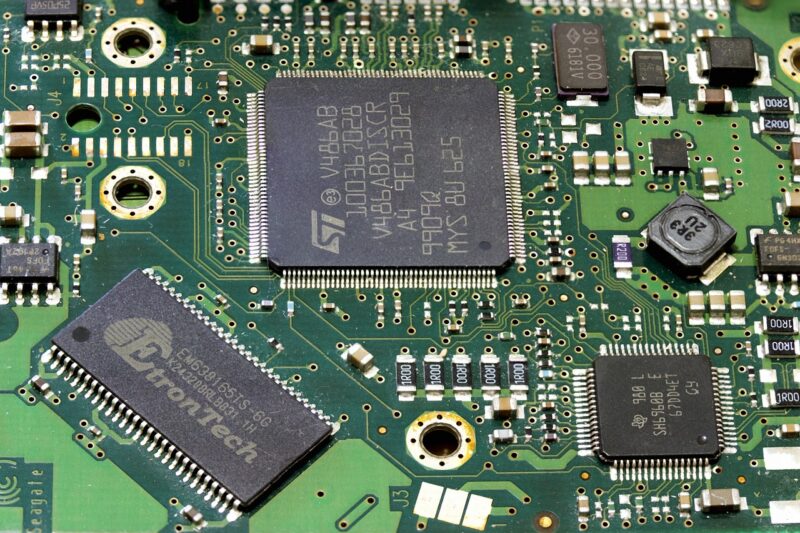How Intel Became the Heart of Modern Computers and Shaped the Tech World
November 14, 2024

Intel has not only become a household name but also a cornerstone in the evolution of modern computing. Founded in 1968 by Robert Noyce and Gordon Moore, Intel began its journey as a semiconductor manufacturer at a time when the landscape of technology was shifting dramatically from analog to digital. The company’s innovative spirit and commitment to staying at the forefront of microprocessor technology revolutionized personal computing, making it synonymous with computer processing power.
1. The Birth of Intel and the Microprocessor Revolution
Intel’s first major breakthrough came in 1971 with the launch of the Intel 4004, the world’s first commercially available microprocessor. This 4-bit processor, capable of performing 60,000 operations per second, laid the groundwork for the modern computing era.
Intel’s innovation didn’t just stop with the 4004. In the following years, the company released a series of successor microprocessors, notably the Intel 8008 and the Intel 8080, which further enhanced computation abilities and solidified Intel’s role in the burgeoning computer industry.
The company’s pivotal moment, however, came in 1981 when IBM selected Intel’s 8088 microprocessor for its first personal computer, the IBM PC. This move not only boosted Intel’s sales but also established it as an industry leader.
2. Dominance Through Innovation: The x86 Architecture
With the introduction of the 8086 microprocessor in 1978, Intel created the x86 architecture, which became the standard for personal computing. This architecture allowed for backward compatibility with older software, paving the way for a vast ecosystem of applications and hardware that fostered growth.
Intel followed the x86 architecture with the introduction of the 286, 386, and 486 processors, each offering improved performance and capabilities. The rise of the x86 architecture defined the landscape of personal computing and led to the proliferation of compatible hardware and software, making Intel’s chips the de facto standard in the industry.
3. The Pentium Leap: A New Era of Computing
In the 1990s, Intel again transformed computing by introducing the Pentium processor. With its dual pipelines, enhanced floating-point computation, and advanced multimedia capabilities, the Pentium revolutionized applications such as gaming, graphics, and content creation.
The success of the Pentium processor not only secured Intel’s dominant market share but also led to a series of significant marketing initiatives to promote the brand. The catchy “Intel Inside” campaign not only positioned Intel as a leader in technology but also created consumer awareness about the importance of microprocessor brands in their purchasing decisions.
With the widespread adoption of the Internet and multimedia applications, Intel continued to innovate with its Pentium II, III, and later Pentium 4 processors, ensuring its role as the central player in the computing industry.
4. Intel’s Role in the Mobile and Laptop Era
As laptops and mobile devices increasingly gained popularity, Intel adapted to the changing marketplace. The introduction of the Centrino platform in 2003 marked Intel’s foray into mobile computing. By integrating a power-efficient processor, chipset, and wireless capabilities, Intel successfully positioned itself in the growing laptop market.
Further innovations have included the Atom line of processors aimed at netbooks and low-power devices, allowing Intel to maintain a competitive edge in an evolving tech landscape. With the rise of mobile computing, Intel has continuously focused on performance, power efficiency, and the integration of graphics capabilities into its processors.
5. The Rise of the Data Center: Intel’s Cloud Strategy
In recent years, the explosion of big data and cloud computing has led Intel to focus on the data center market. Intel servers became the backbone of cloud computing, providing the necessary power and performance to handle large workloads. Innovations such as Intel Xeon processors and the introduction of FPGA (Field Programmable Gate Arrays) have allowed Intel to stay relevant in the increasingly complex and high-performance computing environments.
Intel has also made significant investments in artificial intelligence, machine learning, and high-performance computing to advance its capabilities in responding to industry trends. Its partnerships with major cloud providers like Amazon Web Services and Microsoft Azure have solidified Intel’s position as a leader in data-driven computing.
6. Challenges and the Future of Intel
Despite its remarkable history, Intel has encountered challenges over the years, including increased competition from AMD and ARM-based processors. The semiconductor industry is rapidly evolving, with significant advancements in technology leading to rising pressure for Intel to innovate and adapt to stay competitive.
To address these challenges, Intel has focused on expanding its manufacturing capabilities and investing in research and development to maintain leadership in the semiconductor market. With initiatives like the Intel 7 process (previously known as 10nm process) and other advanced technologies, Intel aims to sustain its growth trajectory while facing external competition.
Today, Intel is pivoting towards emerging areas such as quantum computing, neuromorphic computing, and AI, reaffirming its commitment to innovation and technology solutions. Whether through partnerships, acquisitions, or in-house projects, Intel aims to shape the future of technology and remain at the heart of modern computing.
Conclusion: Intel’s Lasting Impact on Technology
Intel’s journey from a small semiconductor manufacturer to a global leader in technology is a testament to the power of innovation. The company’s forward-thinking initiatives have not only revolutionized personal computing but have set the standard for future technological advancements. Intel’s continued commitment to research, development, and adaptability will determine its place in an ever-evolving tech landscape.
As we look towards a future powered by artificial intelligence, the Internet of Things, and data-driven decisions, one thing remains clear: Intel will continue to be a pivotal player in shaping the world of modern technology, reminding us that the heart of computing lies within its microprocessors.






